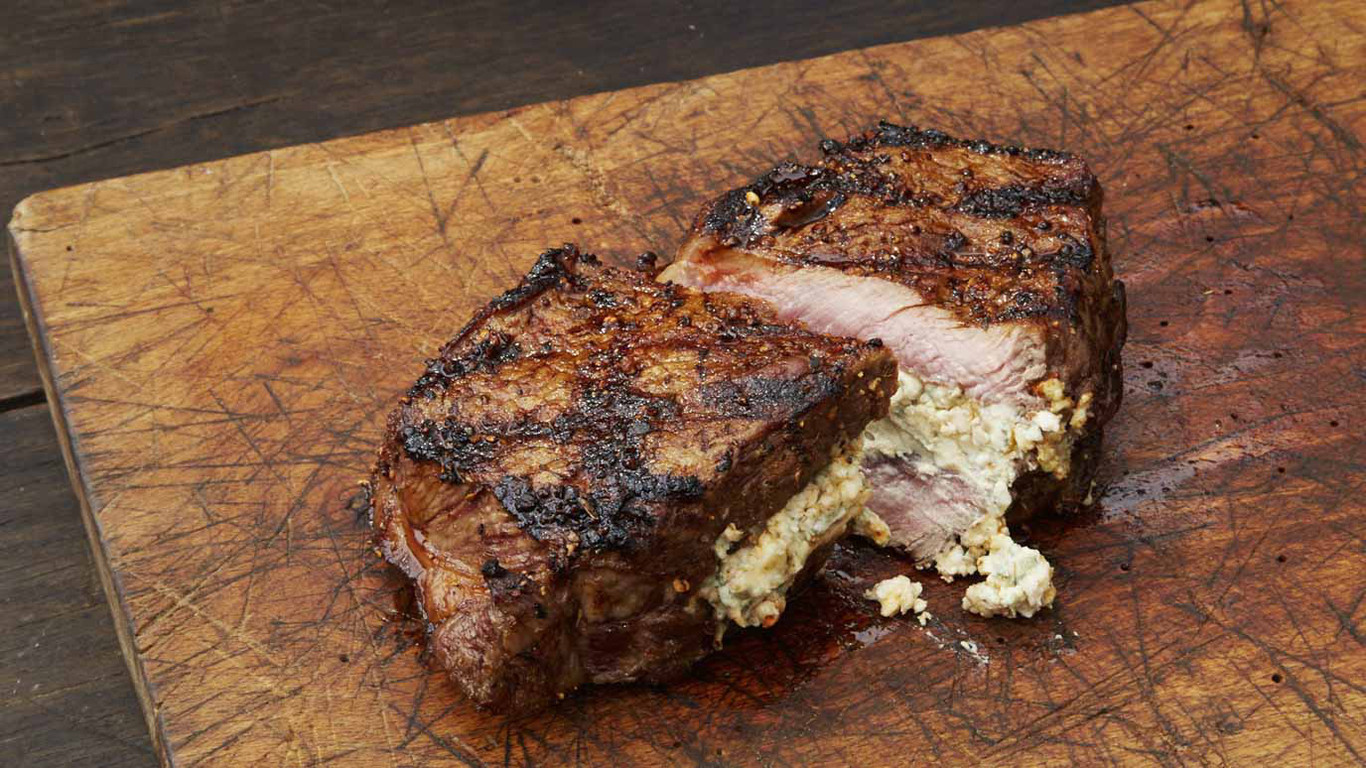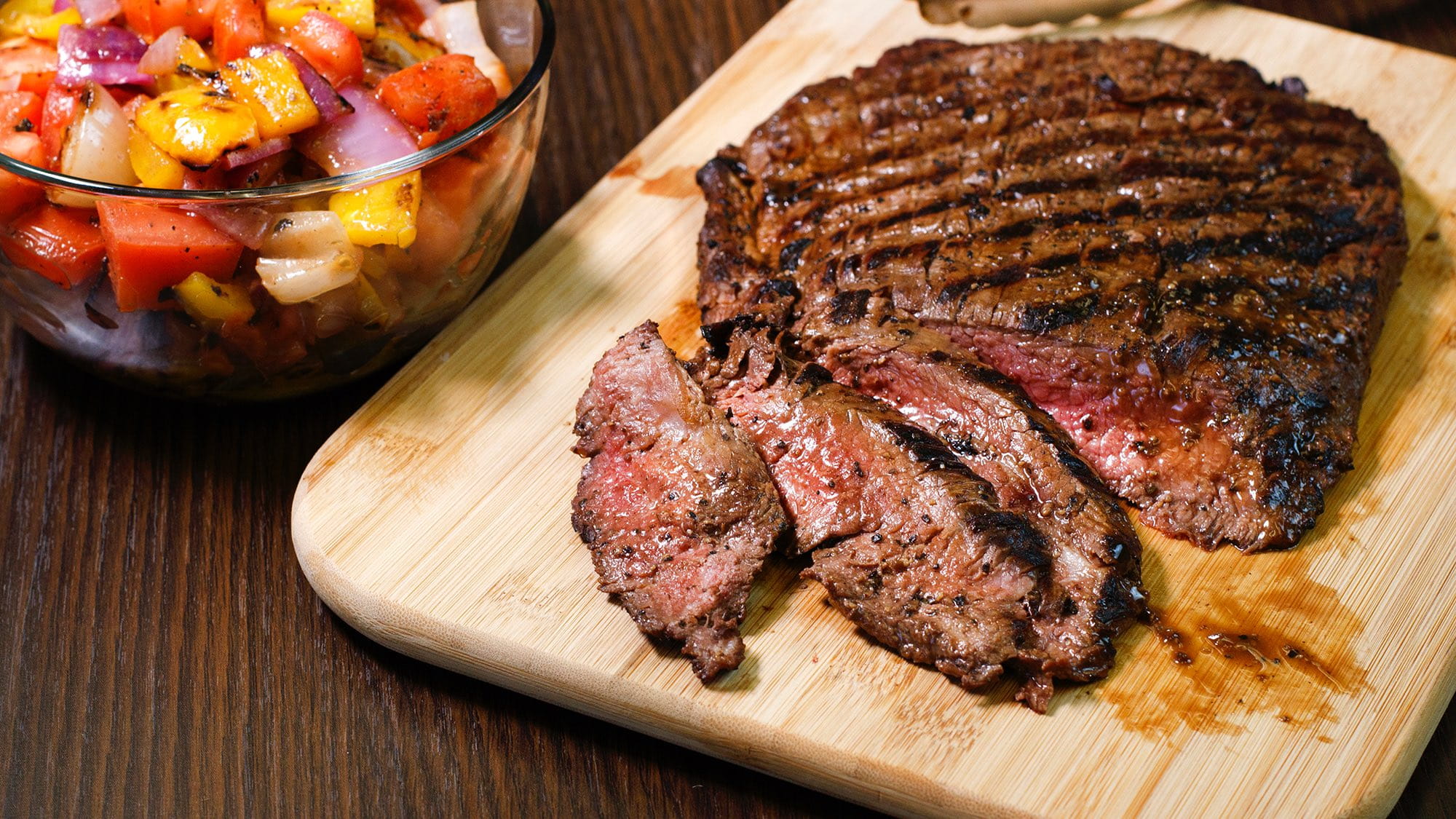Conjure up an image of the perfect steak and you’ll likely land on a red and juicy interior enveloped in a savory, browned crust. Add in a sizzling cast iron pan, a splash of garlic and herb-infused butter, maybe some flaky sea salt sprinkled on top in salt bae fashion, and you’ve come pretty damn close to perfection. It looks so simple, so why don’t most home-cooked steaks taste remotely as good as a steakhouse chop?
The secret isn’t just in using salt, but in using salt properly.
Salt is one of the most important ingredients in cooking. It intensifies flavors, subdues bitterness, creates contrast, and provides texture. That is not to downplay the role that excessive salt intake can have on our health; part of the magic of salt is in the balance it creates. You don’t need to overuse it to feel its impact, you just need to use it better. Amounts matter. Timing matters. And not all salt is created equal.
Conjure up that image of the perfect steak one more time. The two most important qualities of a great steak are a good crust (which calls for aggressive heat) and a tender and juicy interior (which requires a gentle roasting). As meat expert Max Grebb (aka MaxTheMeatGuy) puts it, “they’re two very contradicting elements of cooking, and the way in which we salt our steak is going to allow us to do those things most effectively in order to give us that balance.”
What happens when you salt a steak?
We salt steaks primarily for flavor, but that’s not all it contributes. Salt is also a must for tenderization and moisture retention.
Sprinkle a layer of kosher salt on a piece of meat (or any food that contains moisture for that matter) and you’ll soon see osmosis at work. Within minutes, beads of liquid will appear on the surface, where they will then begin to dissolve each salt crystal. This creates a concentrated brine on the surface of the steak. Given enough time, this brine will diffuse back into the meat, providing both flavor and tenderness. The more time it has to diffuse back in (taking the thickness of the cut into consideration), the deeper it can penetrate.
“When you’re dry brining a steak,” Grebb says, “all that salt that has been fully absorbed by the meat itself binds to those molecules, making it harder for water to escape and ultimately improving moisture retention within those cells.” So not only does this allow you to season the inside of your steak, it will make the end result noticeably juicier.
Photo: McCormick
Why timing matters when salting a steak
Scour cookbooks, read online blogs, and watch celebrity chefs and you will find a wide array of differing opinions on the best time to salt your steak before cooking. Some swear by salting immediately before or even while cooking. Others are fervent that a properly seasoned steak should be salted for 12 or even 48 hours ahead of time, depending on the thickness of the cut. Then there are those who refuse to salt until after a steak is cooked. But most agree that cooking your steak within 3 to 45 minutes after salting is a big mistake (huge). That amount of time allows the salt to pull moisture out of the steak but not enough time for it to diffuse back in. Aside from starving your meal of flavor and tenderness, cooking this way will make it much more difficult to get that perfect crust.
Moisture, as we know, is the enemy of browning. In order to get that sought after Maillard Reaction, the surface of the steak should be as dry as possible, allowing for an exponentially better sear. Cooking within that approximate 3- to 45-minute time frame—when the moisture has been drawn out from the protein, but has not yet been reabsorbed into the meat—does it a massive disservice. Give it at least an hour. The longer you allow the brine to reabsorb into a steak, the deeper the flavor and tenderness will be, while giving the surface of the steak enough time to properly dry.
“What that means,” Grebb says, “is that you can actually cook it at a slightly lower temperature and still get a great crust while still getting that edge to edge medium rare.”
Obviously, life is hard, and timing is too. If there’s just no time for that amount of planning, the rule of thumb is to cook your steak directly after season—like, within a minute, so the salt doesn’t have enough time to draw moisture from the steak.
How to salt a steak (and what kind of salt to use)
“In general, people severely under-season steaks,” Grebb says, and especially thicker cuts. “Using the analogy of snow, if it’s a thick steak, you can use a heavy snowfall. If it’s a thin steak, you’ll want to use more of a dusting.”
Speaking of snowflakes, each is unique, and the same is true of salt grains. While nearly all culinary salt is sodium chloride, the differing textures and shapes of each type of salt will have varying effects on how it interacts with food—for our purposes here, that means how it both draws moisture out and diffuses back into meat.
The shape of coarse kosher salt makes it ideal for absorbing into steak (or any meat for that matter) and clinging to those molecules. Because it is both light and coarse, it’s easier to avoid over-salting. Table salt is much more difficult to evenly distribute because of the fineness of the grains, and it will dissolve quickly into the meat before being able to properly draw the moisture out to create that concentrated brine. (The taste of iodized salt is also noticeably different in this context.) Because sea salt comes in a wide range of grinds, it’s typically not my first choice for dry brines.
I will never veer away from my coarse kosher salt, but whatever you choose, it’s important to know salt is measured in weight and not volume; a teaspoon of one kind can be much saltier than a teaspoon of another.
Use a rack when salting a steak
For those who have the time to dry brine their steak, another common mistake is only thinking about one side of it. “You want to leave it on an uncovered rack as opposed to wrapping it in tin foil or putting it on a plate,” Grebb says. “Where the top side might be exposed to air, drying it out, but the bottom side is sitting in liquid and you’re not getting that dry brining effect.” By this point, those hungry protein molecules inside the meat are working their hardest to retain that salty moisture. There won’t be much dripping off with a dry brine, but we still want any residual liquid to be nice and air dried to get an equally crispy sear on both sides.
The last thing anyone wants, after dedicating hours to drying out their steak, is to find it sitting in a puddle of moisture. Using a rack allows you to get air circulating around the entire piece of meat.
There’s a reason salt cravings are a thing. Our bodies actually need it (in moderation), and your steak does too. Whether you’re grilling, pan frying, or sous vide-ing, salt is a steak’s best friend. Treat it with the thoughtful care and respect it deserves, and that image of the perfect steak is readily attainable.
This article was written by Sam Palazzi from Lifehacker and was legally licensed through the Industry Dive publisher network. Please direct all licensing questions to legal@industrydive.com.







